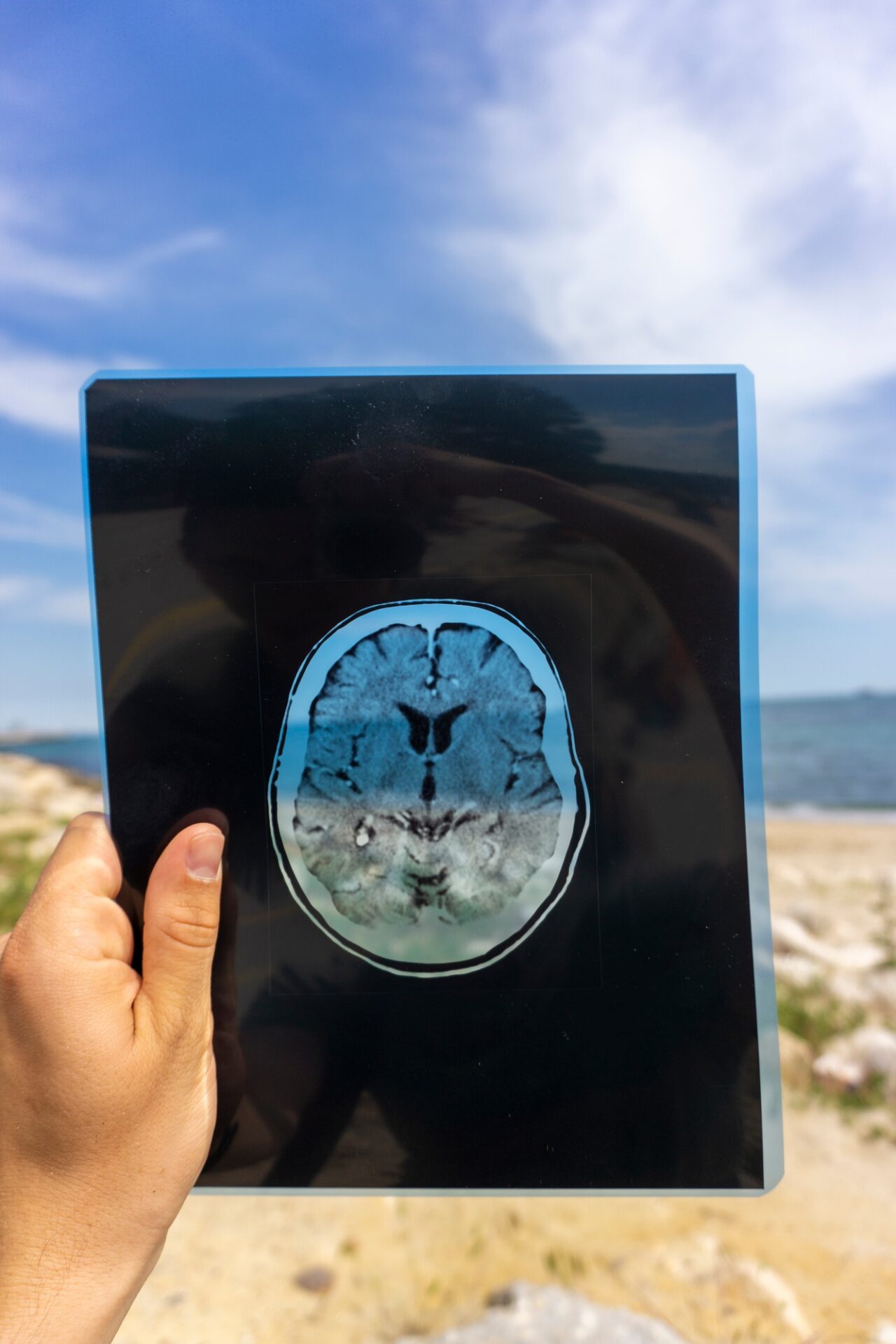Our circadian rhythms and certain wavelength ranges of light (ultraviolet, infrared, and visible) regulate the production and expression of our wake/sleep hormones, serotonin, and melatonin. The intensities of these wavelengths vary from sunrise to sunset, signaling to our bodies—through our eyes and skin—the time of day.
Sunglasses block portions of the light spectrum, causing disruption to the master clock that controls our circadian rhythms.
The best way to avoid dysregulation of our wake/sleep cycles is to ensure we get natural, full-spectrum sunlight into our eyes and onto our skin throughout the day.
As nutritionists and advocates for healthful living, we tend to think of sunlight mainly as our best and most natural source of vitamin D. But sunlight does far more for us than converting cholesterol into vitamin D.
Sunlight, through its sunrise-to-sunset spectral shift, also sets the body’s circadian rhythm, which triggers the synthesis of many hormones, including serotonin and melatonin. These hormones manage our wakefulness during the day and sleepiness at night, helping us achieve sufficient rest through the hours of darkness. (1)(2)(3)
Because the regulation of serotonin and melatonin is critical to our sleep cycles, any interference with the light detection system in our eyes can have a serious impact on our health and well-being. The use of sunglasses or any corrective lenses (e.g., eyeglasses and contact lenses) alters the light spectrum traveling through the eyes’ visual pathway and skews signaling to the brain. (4)(5)
While it may not be possible to adjust our lives to allow for long periods spent outdoors, we can gain enormous benefits by taking a few minutes each morning, afternoon, and evening to get out into the sunshine with our eyes uncovered. These short sun exposures can be combined with other activities, such as meditating on a patch of grass in the morning, taking a power walk at lunchtime, or enjoying a leisurely stroll as the sun goes down. (6)(7)(8)(9)


The quality of the light we see is as important to our health as the quality of the food, water, and air we consume. We are designed to live in an environment that exposes us to sunlight during the day and starlit darkness at night—an environment with no LEDs, no fluorescent bulbs, no tinted windows, and no sunglasses. (10)
As the day progresses, from dawn to dusk, so does the light spectrum, shifting from higher infrared at sunrise, to increasing ultraviolet across the middle of the day, and back to high infrared as the sun goes down. (11)(12)
Most people think of melatonin as the “hormone of darkness,” but its production in the skin actually begins at dawn with the arrival of near infrared light, even though melatonin’s activation is suppressed by sunlight. A possible reason for this is that melatonin works as a powerful antioxidant and anti-inflammatory to protect the skin and mitochondria. However, it is at night that the pineal gland primarily produces and secretes melatonin. Thus, sunlight exposure during the day is beneficial for melatonin production in all cells of the body, while light (especially blue light) should be avoided at night to maintain the circadian rhythm. (13)(14)(15)(16)(17)

The quality of the light we see is as important to our health as the quality of the food, water, and air we consume. We are designed to live in an environment that exposes us to sunlight during the day and starlit darkness at night—an environment with no LEDs, no fluorescent bulbs, no tinted windows, and no sunglasses. (10)
As the day progresses, from dawn to dusk, so does the light spectrum, shifting from higher infrared at sunrise, to increasing ultraviolet across the middle of the day, and back to high infrared as the sun goes down. (11)(12)
Most people think of melatonin as the “hormone of darkness,” but its production in the skin actually begins at dawn with the arrival of near infrared light, even though melatonin’s activation is suppressed by sunlight. A possible reason for this is that melatonin works as a powerful antioxidant and anti-inflammatory to protect the skin and mitochondria. However, it is at night that the pineal gland primarily produces and secretes melatonin. Thus, sunlight exposure during the day is beneficial for melatonin production in all cells of the body, while light (especially blue light) should be avoided at night to maintain the circadian rhythm. (13)(14)(15)(16)(17)
The vital connection between sunlight and our hormones happens, in part, through photoreceptors that transmit information to neurons in our eyes. These neurons, called retinal ganglion cells (RGCs), are located on the inner surface of the retina. A small percentage of the RGCs “contribute to the circadian rhythms” by detecting specific wavelengths that set the suprachiasmatic nucleus, our master clock in the brain. Thus, any filter placed between natural daylight and our eyes can have a disastrous effect on our circadian wake/sleep cycles. And with it, a detrimental impact on our moods and cognition, which could eventually lead to neurodegenerative diseases. (18)(19)(20)
An additional concern with sunglasses is that not all of them shade the eyes the same way. In fact, some sunglasses can damage our eyes, in addition to destabilizing our biological clocks. This risk arises from the reduction in brightness behind tinted lenses. Our eyes naturally respond to brightness by blinking our eyelids and constricting our pupils. If sunglasses are poorly designed or their UV coating is worn or damaged, they may darken the visible range of light while allowing UV light to penetrate. This shading of the visible spectral range could mislead the eyes into inadequately responding to the intensity of non-visible wavelengths entering the pupils, leaving the internal surfaces of the eye unprotected. (21)

The vital connection between sunlight and our hormones happens, in part, through photoreceptors that transmit information to neurons in our eyes. These neurons, called retinal ganglion cells (RGCs), are located on the inner surface of the retina. A small percentage of the RGCs “contribute to the circadian rhythms” by detecting specific wavelengths that set the suprachiasmatic nucleus, our master clock in the brain. Thus, any filter placed between natural daylight and our eyes can have a disastrous effect on our circadian wake/sleep cycles. And with it, a detrimental impact on our moods and cognition, which could eventually lead to neurodegenerative diseases. (18)(19)(20)

An additional concern with sunglasses is that not all of them shade the eyes the same way. In fact, some sunglasses can damage our eyes, in addition to destabilizing our biological clocks. This risk arises from the reduction in brightness behind tinted lenses. Our eyes naturally respond to brightness by blinking our eyelids and constricting our pupils. If sunglasses are poorly designed or their UV coating is worn or damaged, they may darken the visible range of light while allowing UV light to penetrate. This shading of the visible spectral range could mislead the eyes into inadequately responding to the intensity of non-visible wavelengths entering the pupils, leaving the internal surfaces of the eye unprotected. (21)

When it comes to our health with regard to sunlight, the message seems clear. According to Dr. Glen Jeffery, Professor of Neuroscience at UCL (University College, London), infrared-blocking windows and LED lights—which emit no infrared light—create a “killer” environment indoors. Jeffery’s recommendation is “take a walk in the park and sit under a tree.” (22)(23)
This is evidence-backed advice because the green in tree leaves reflects longer wavelengths, which include infrared. Unlike ultraviolet, infrared penetrates deep into the body, and most of it—approximately 98%—stays inside us, providing energy and activating our cells’ mitochondria. This means that even if your skin is covered, you can still absorb infrared through your clothing. (24)(25)(26)
Jeffery’s own studies have shown that skin exposed to red lights (670 nm), for periods as short as 3 minutes, can activate the mitochondria, the powerhouses that make adenosine triphosphate (ATP) in every one of our cells. He also found that exposing even a small part of the body to red and infrared light for 15 minutes can have a profound effect on blood glucose levels. This is because mitochondria activation calls for a massive amount of energy to run the electron transport chain, which makes ATP. (27)
While 15 minutes of sun exposure in the early morning and near sunset can have a profound effect on our master clock and mitochondria, a period of 20 minutes in midday sunlight, with our skin exposed and eyes uncovered, can activate the precursor aromatic amino acids in our eyes and skin. Tryptophan, one of these aromatic amino acids, when exposed to UV light, transforms into serotonin, which is then turned into melatonin. (28)(29)
[Image Credit https://www.ncbi.nlm.nih.gov/books/NBK550972/]

When it comes to our health with regard to sunlight, the message seems clear. According to Dr. Glen Jeffery, Professor of Neuroscience at UCL (University College, London), infrared-blocking windows and LED lights—which emit no infrared light—create a “killer” environment indoors. Jeffery’s recommendation is “take a walk in the park and sit under a tree.” (22)(23)
This is evidence-backed advice because the green in tree leaves reflects longer wavelengths, which include infrared. Unlike ultraviolet, infrared penetrates deep into the body, and most of it—approximately 98%—stays inside us, providing energy and activating our cells’ mitochondria. This means that even if your skin is covered, you can still absorb infrared through your clothing. (24)(25)(26)
Jeffery’s own studies have shown that skin exposed to red lights (670 nm), for periods as short as 3 minutes, can activate the mitochondria, the powerhouses that make adenosine triphosphate (ATP) in every one of our cells. He also found that exposing even a small part of the body to red and infrared light for 15 minutes can have a profound effect on blood glucose levels. This is because mitochondria activation calls for a massive amount of energy to run the electron transport chain, which makes ATP. (27)
While 15 minutes of sun exposure in the early morning and near sunset can have a profound effect on our master clock and mitochondria, a period of 20 minutes in midday sunlight, with our skin exposed and eyes uncovered, can activate the precursor aromatic amino acids in our eyes and skin. Tryptophan, one of these aromatic amino acids, when exposed to UV light, transforms into serotonin, which is then turned into melatonin. (28)(29)
[Image Credit https://www.ncbi.nlm.nih.gov/books/NBK550972/]
The connection between sunglasses and sunlight is a single bullet point in the complex topic of circadian biology, but the solution is relatively simple. Ensuring our circadian rhythms stay in sync is an easy justification for stepping outside to enjoy the sunrise and sunset each day and seeking full-spectrum sunlight at lunchtime. That may require moving the home “gym” outdoors or parking the car in the furthest space in the lot, but it’s worth it. Because every minute of sunlight we’re exposed to profoundly benefits our health.
When starting any new activity, it’s always smart to play it safe and go slowly. The same is true for sun exposure: build up your tolerance over time and be vigilant about avoiding sunburn.
Alex Hayes is a Certified Holistic Nutritionist, healer, researcher and writer. It is her privilege to help wise and wonderful women write their own health journeys, leading to the “happily ever after” they deserve. When Alex doesn’t have pen to paper, she is researching the latest in nutrition, refining her own path to optimal health or enjoying the warmth of the sun with her toes pressed to the cool earth.






We Use Cookies
We may place these for analysis of our visitor data, to improve our website, show personalized content and to give you a great website performance. For more information about the cookies, please view our policy.
We may place these for analysis of our visitor data, to improve our website, show personalized content and to give you a great website performance. For more information about the cookies, please view our policy at https://www.energetichealthinstitute.org/school-policies-general-info/
Essential cookies enable basic functions and are necessary for the proper function of the website.
You can find more information in our School Policies & General Info.